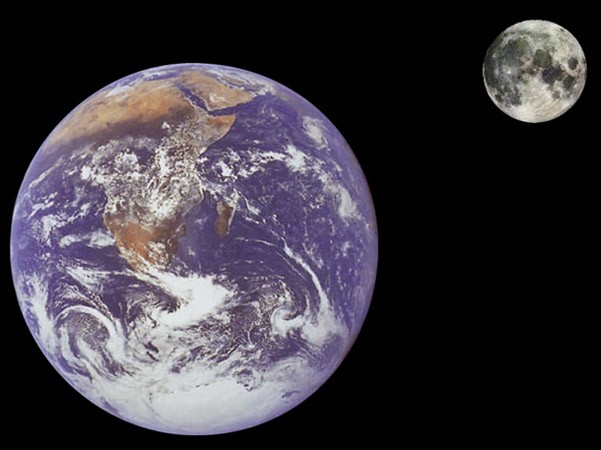It looks like you're using an Ad Blocker.
Please white-list or disable AboveTopSecret.com in your ad-blocking tool.
Thank you.
Some features of ATS will be disabled while you continue to use an ad-blocker.
share:
reply to post by SquirrelNutz
That is part of the answer for sure.
What about transient lunar phenomena? They are very real yet we have been led to believe that there is nothing but a lump of inert rock orbiting Earth for so long. Nothing to see here here, please move along.
There is also the denial of the presence of water there - without any real evidence that there wasn't - which cannot be called a skeptical position. Of course then, India, an apparently technologically inferior nation discovered water as soon as they bothered looking. Hmmm....
Finally I'll throw in the claim that we haven't been back. It is not an especially massive challenge today but we are told that it would make more sense to land on an asteroid? It is possible to produce fuel on the moon which could then be used to stage trips elsewhere. The strategic advantage of a lunar base is also significant here. How do we know the Chinese, Japanese or even a private interest group won't make a determined (possibly secret) effort to do so if a NATO power doesn't? Is it likely that the dominant global military power would take this risk? NOT ON YOUR NELLY!
There are plenty more questions but I'll leave it there. Something does not add up. We are not being told everything. You have been lied to - of that I am in no doubt. The problem is working out why.
That is part of the answer for sure.
What about transient lunar phenomena? They are very real yet we have been led to believe that there is nothing but a lump of inert rock orbiting Earth for so long. Nothing to see here here, please move along.
There is also the denial of the presence of water there - without any real evidence that there wasn't - which cannot be called a skeptical position. Of course then, India, an apparently technologically inferior nation discovered water as soon as they bothered looking. Hmmm....
Finally I'll throw in the claim that we haven't been back. It is not an especially massive challenge today but we are told that it would make more sense to land on an asteroid? It is possible to produce fuel on the moon which could then be used to stage trips elsewhere. The strategic advantage of a lunar base is also significant here. How do we know the Chinese, Japanese or even a private interest group won't make a determined (possibly secret) effort to do so if a NATO power doesn't? Is it likely that the dominant global military power would take this risk? NOT ON YOUR NELLY!
There are plenty more questions but I'll leave it there. Something does not add up. We are not being told everything. You have been lied to - of that I am in no doubt. The problem is working out why.
reply to post by blamethegreys
There is one very important thing you did not take into account and that is focal length.
The typical lens used for the Lunar surface photography was a 60mm lens. For a medium format camera that uses 70mm film, like the Hasselblad's used on Apollo. A 60mm lens would be a mild wide-angle lens, thus objects will appear smaller than normal. An 80mm lens would be considered "normal", meaning that objects appear approximate to the way we would see them with the naked eye. They also carried telephoto lenses on the Apollo missions. The famous Earth rising photos from Apollo 8 used a 250mm telephoto lens. Other missions also carried a 500mm lens.
The examples shown in my link above would have been taken on 35mm format film or a digital equivalent to it. It's the standard format for most consumer camera's. A 50mm lens is the "normal" lens and the 35mm lens would be similar to the 60mm lens on Apollo.
So the two photos you posted aren't really compatible since they're more than likely different formats and have different focal lengths. That and the Moon in the saxophone photo is completely over-exposed, so it's impossible to tell how big it really is.
There is one very important thing you did not take into account and that is focal length.
The typical lens used for the Lunar surface photography was a 60mm lens. For a medium format camera that uses 70mm film, like the Hasselblad's used on Apollo. A 60mm lens would be a mild wide-angle lens, thus objects will appear smaller than normal. An 80mm lens would be considered "normal", meaning that objects appear approximate to the way we would see them with the naked eye. They also carried telephoto lenses on the Apollo missions. The famous Earth rising photos from Apollo 8 used a 250mm telephoto lens. Other missions also carried a 500mm lens.
The examples shown in my link above would have been taken on 35mm format film or a digital equivalent to it. It's the standard format for most consumer camera's. A 50mm lens is the "normal" lens and the 35mm lens would be similar to the 60mm lens on Apollo.
So the two photos you posted aren't really compatible since they're more than likely different formats and have different focal lengths. That and the Moon in the saxophone photo is completely over-exposed, so it's impossible to tell how big it really is.
Originally posted by blamethegreys
So I sometimes read threads on the Apollo mission debunking, but I have seen so many pictures of bad lighting mistakes and reused terrain that my mind was made up on the subject long ago. I did get sucked into the current topic, Do These Manipulated Apollo Images.... On page 1 Jazzguy posted a link I hadn't seen before (www.aulis.com...) which was chock full of anomalous pictures from the Apollo missions.
I bring it up cause while perusing the library, I kept noticing how small the earth was in some, not all, of the photos. As a geology major, I know that the moon is about the size of our solid iron core (apologies to hollow earth people! ) It was bugging me, so I researched a little more. I don't recall having read anything about the earth-scale in any previous posts or outside websites, but maybe this is old news and I wasted an afternoon. If so flame me gently, I like it better like that.
The earth should look 3.66 times bigger than the moon, as viewed from the lunar surface. Granted there really is nothing to use for scale, and I suspected that maybe I was suffering from a case of Moon Illusion ... or more properly in this case, 'Earth Illusion'.
But then I stumbled onto this picture.
That's Apollo 17, they were allegedly 3 days on the Lunar surface. But didn't take one single picture of the fabulous Earthrise. So that's another good evidence.
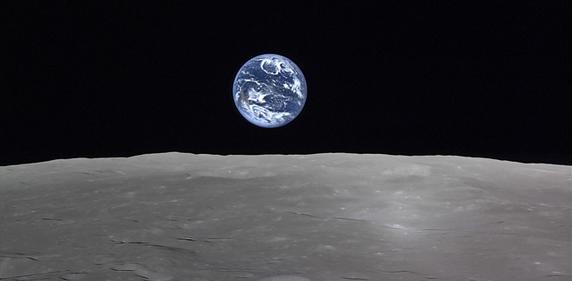
www.jaxa.jp...
Originally posted by Ove38
That's Apollo 17, they were allegedly 3 days on the Lunar surface. But didn't take one single picture of the fabulous Earthrise. So that's another good evidence.
Umm, you will never see the Earth rise above the Lunar horizon while on the Lunar surface. One side of the Moon always faces the Earth, therefore the Earth never rises or sets when viewing it from the Moon. Also the Apollo 17 astronauts spent 3 Earth days on the Moon. 1 Lunar day is equal to about 29 days on Earth.
You can only get photos and video of the Earth rising over the Lunar surface when you are in orbit of the Moon.
edit on 30-10-2011 by jra
because: (no reason given)
Originally posted by jra
Originally posted by Ove38
That's Apollo 17, they were allegedly 3 days on the Lunar surface. But didn't take one single picture of the fabulous Earthrise. So that's another good evidence.
Umm, you will never see the Earth rise above the Lunar horizon while on the Lunar surface....
So, a person standing on the lunar surface, at the time this photo was taken by the Japanese "Kaguya" Satellite would not see the fabulous Earthrise ?
Is it possible to see the Sunrise from the lunar surface ?

Earthrise by Japanese "Kaguya" Satellite

Apollo 17 Earthrise AS17-152-23275
edit on 31-10-2011 by Ove38 because: edit link
Looks like something is up with the scale for sure. Well noted.. Star and Flag for thee...
kx)
kx)
Originally posted by Ove38
So, a person standing on the lunar surface, at the time this photo was taken by the Japanese "Kaguya" Satellite would not see the fabulous Earthrise ?
No, the Earth only appears to rise because the probe is orbiting around the Moon. A person on the ground around that location would see the Earth stay low, in the Lunar sky. It would never rise above them.
Is it possible to see the Sunrise from the lunar surface ?
Yes, the Sun would rise and set, since the Moon rotates around the Earth. That's why we see different phases of the Moon. But one Lunar day is about 29 Earth days long.
Originally posted by jra
.... A person on the ground around that location would see the Earth stay low, in the Lunar sky. It would never rise above them....
Which brings on back to the question: Why is the earth so small in the ground photo ?
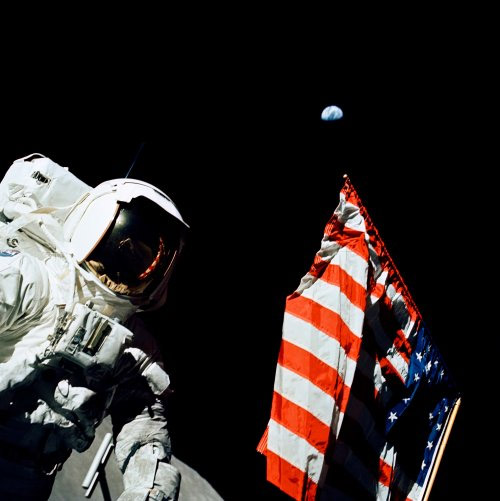
Apollo 17
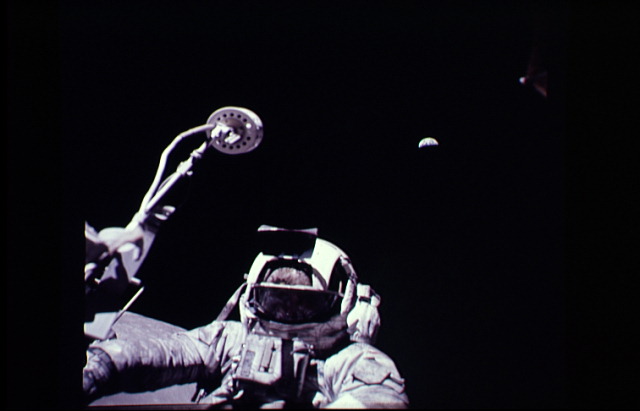
Apollo 17
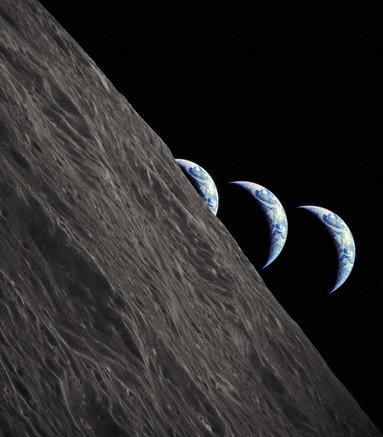
Apollo 17
edit on 1-11-2011 by Ove38 because: lin fix
reply to post by Ove38
Probably because the Earth was added later.
Does nobody have the guts to say it or what?
Probably because the Earth was added later.
Does nobody have the guts to say it or what?
Originally posted by Ove38
Which brings on back to the question: Why is the earth so small in the ground photo ?
Refer to my first post in this thread: Link
One photo is taken with a 60mm lens which is a mild wide angle lens, the other was taken with a 250mm telephoto lens.
reply to post by jra
Two different lenses and the earth still looks way too small in both of them. Sorry, not convinced by that argument, doesn't make sense. The two different lenses you refer to don't seem to have anything distinguishing them from each other in the photos. The earth is not depicted as it should be visible from the surface of the moon. They made a grave mistake.
Two different lenses and the earth still looks way too small in both of them. Sorry, not convinced by that argument, doesn't make sense. The two different lenses you refer to don't seem to have anything distinguishing them from each other in the photos. The earth is not depicted as it should be visible from the surface of the moon. They made a grave mistake.
reply to post by jra
I think more work is needed on this. As you said yourself, the moon is overexposed in the Saxophone shot.
We need to get someone to take a photo using the same type of lens or find one.
I think more work is needed on this. As you said yourself, the moon is overexposed in the Saxophone shot.
We need to get someone to take a photo using the same type of lens or find one.
Originally posted by Pilot
Two different lenses and the earth still looks way too small in both of them.
How big should it look then exactly?
The two different lenses you refer to don't seem to have anything distinguishing them from each other in the photos.
I'm not sure what you mean here. Why would there be anything distinguishing the lenses from one another, in the photos themselves?
The earth is not depicted as it should be visible from the surface of the moon.
Could you explain how it should look and why?
edit on 1-11-2011 by jra because: (no reason given)
Originally posted by jra
Originally posted by Pilot
Two different lenses and the earth still looks way too small in both of them.
How big should it look then exactly?
The two different lenses you refer to don't seem to have anything distinguishing them from each other in the photos.
I'm not sure what you mean here. Why would there be anything distinguishing the lenses from one another, in the photos themselves?
The earth is not depicted as it should be visible from the surface of the moon.
Could you explain how it should look and why?edit on 1-11-2011 by jra because: (no reason given)
It has been explained. You're just not accepting the obvious facts.
What was the purpose of using two lenses in your opinion?
The earth is represented as being smaller in the photographs than it jolly well is from the surface of the moon.
In other words, it should be BIGGER.
Is that more clear?
Originally posted by Pilot
What was the purpose of using two lenses in your opinion?
The earth is represented as being smaller in the photographs than it jolly well is from the surface of the moon.
In other words, it should be BIGGER.
Is that more clear?
I'm of the opinion that in recent years, with the rise of cheap digital cameras with a "zoom" function, a smaller proportion of the population now have any knowledge of lenses, focal lengths, f-stops and other elements of photography.
"What was the purpose of using two lenses in your opinion?" in todays terms would be "What was the purpose of using the zoom function in your opinion?".
Have you ever used the zoom function on a modern digital camera? Why?
There's your answer.
I am happy my thread is still generating debate...It started as a casual observation on my part, but as with some of you it has gotten under my
skin.
Once the lens issue was introduced to me, I have spent way to much time searching for a new comparison photo taken with the proper lens and settings. Unfortunately I have had no luck to date.
Two issues that have bothered me about the lens debate though (I probably don't have a firm enough grasp on the mechanics yet, but I'll ask anyhow):
1) A larger lens can "pull" a far off feature closer, and a plain old 35mm records much the same as the human eye does, right? I just can't wrap my head around two points: How can the lens decrease the earth's size exactly, and would a comparably shot (to the Apollo photo) of a man with moon behind him result in an itty bitty 1/3 sized moon?
2) Specifically to the telephoto photographs of earth: Sure you can pull a mountain into a photo with one, so your location for the shot appears many miles closer...but with the Moon being what is it, ~390,000 km away, how could that level of zoom increase the apparent size of the earth in any appreciable way?
If i won the lottery tonight, I'll buy all the equipment needed to perform a completely scientific test of my theory. Nevermind. I'll hire someone to do it for me while I sip margaritas on a beach somewhere!
Once the lens issue was introduced to me, I have spent way to much time searching for a new comparison photo taken with the proper lens and settings. Unfortunately I have had no luck to date.
Two issues that have bothered me about the lens debate though (I probably don't have a firm enough grasp on the mechanics yet, but I'll ask anyhow):
1) A larger lens can "pull" a far off feature closer, and a plain old 35mm records much the same as the human eye does, right? I just can't wrap my head around two points: How can the lens decrease the earth's size exactly, and would a comparably shot (to the Apollo photo) of a man with moon behind him result in an itty bitty 1/3 sized moon?
2) Specifically to the telephoto photographs of earth: Sure you can pull a mountain into a photo with one, so your location for the shot appears many miles closer...but with the Moon being what is it, ~390,000 km away, how could that level of zoom increase the apparent size of the earth in any appreciable way?
If i won the lottery tonight, I'll buy all the equipment needed to perform a completely scientific test of my theory. Nevermind. I'll hire someone to do it for me while I sip margaritas on a beach somewhere!
Originally posted by blamethegreys
2) Specifically to the telephoto photographs of earth: Sure you can pull a mountain into a photo with one, so your location for the shot appears many miles closer...but with the Moon being what is it, ~390,000 km away, how could that level of zoom increase the apparent size of the earth in any appreciable way?
A telescope can make a planet far away look bigger, right?
But you also have to understand that a telescope IS a lens with a long focal length.
The distance to the object doesnt actually matter. What we're really interested in is its angular size. How many minutes of arc it has. The house across the street, a distant mountain, a planet, a galaxy. It all works the same.
Originally posted by blamethegreys
I just can't wrap my head around two points: How can the lens decrease the earth's size exactly, and would a comparably shot (to the Apollo photo) of a man with moon behind him result in an itty bitty 1/3 sized moon?
To illustrate the effect lens focal length can have, watch the following video of a "dolly zoom" technique...
Although the object in the foreground stays the same "size" the objects in the background can have a remarkably different size depending on the focal length of the lens at that moment.
So... if you want an image of a foreground object to fill half the screen (astronaut, sax player), the lens focal length has a big effect on the size of the background objects.
reply to post by blamethegreys
Sorry I don't understand!
Where did you factor in:
- The lens curvature of the different cameras
- The resolution difference of the cameras
- The zoom difference of the camera's
- The altitude, global positioning differences of the locations
- The distance of Earth from the moon at the time
Or did you just think you could just take 2 photos, not control the variables and draw a scientific conclusion without following any scientific method?
Sorry I don't understand!
Where did you factor in:
- The lens curvature of the different cameras
- The resolution difference of the cameras
- The zoom difference of the camera's
- The altitude, global positioning differences of the locations
- The distance of Earth from the moon at the time
Or did you just think you could just take 2 photos, not control the variables and draw a scientific conclusion without following any scientific method?
edit on 3-11-2011 by byteshertz because: (no reason given)
new topics
-
whistleblower Captain Bill Uhouse on the Kingman UFO recovery
Aliens and UFOs: 2 hours ago -
1980s Arcade
General Chit Chat: 4 hours ago -
Deadpool and Wolverine
Movies: 5 hours ago -
Teenager makes chess history becoming the youngest challenger for the world championship crown
Other Current Events: 6 hours ago -
CIA botched its handling of sexual assault allegations, House intel report says
Breaking Alternative News: 7 hours ago -
Lawsuit Seeks to ‘Ban the Jab’ in Florida
Diseases and Pandemics: 9 hours ago -
Starburst galaxy M82 - Webb Vs Hubble
Space Exploration: 11 hours ago
top topics
-
Lawsuit Seeks to ‘Ban the Jab’ in Florida
Diseases and Pandemics: 9 hours ago, 20 flags -
Starburst galaxy M82 - Webb Vs Hubble
Space Exploration: 11 hours ago, 11 flags -
CIA botched its handling of sexual assault allegations, House intel report says
Breaking Alternative News: 7 hours ago, 8 flags -
The Superstition of Full Moons Filling Hospitals Turns Out To Be True!
Medical Issues & Conspiracies: 13 hours ago, 8 flags -
whistleblower Captain Bill Uhouse on the Kingman UFO recovery
Aliens and UFOs: 2 hours ago, 6 flags -
IDF Intel Chief Resigns Over Hamas attack
Middle East Issues: 17 hours ago, 6 flags -
15 Unhealthiest Sodas On The Market
Health & Wellness: 12 hours ago, 5 flags -
It takes One to Be; Two to Tango; Three to Create.
Philosophy and Metaphysics: 17 hours ago, 4 flags -
Teenager makes chess history becoming the youngest challenger for the world championship crown
Other Current Events: 6 hours ago, 3 flags -
Deadpool and Wolverine
Movies: 5 hours ago, 3 flags
active topics
-
1980s Arcade
General Chit Chat • 7 • : Freeborn -
How ageing is" immune deficiency"
Medical Issues & Conspiracies • 24 • : annonentity -
Europe declares war on Russia?
World War Three • 59 • : Freeborn -
George Knapp AMA on DI
Area 51 and other Facilities • 38 • : theshadowknows -
Candidate TRUMP Now Has Crazy Judge JUAN MERCHAN After Him - The Stormy Daniels Hush-Money Case.
Political Conspiracies • 618 • : WeMustCare -
New whistleblower Jason Sands speaks on Twitter Spaces last night.
Aliens and UFOs • 38 • : baablacksheep1 -
-@TH3WH17ERABB17- -Q- ---TIME TO SHOW THE WORLD--- -Part- --44--
Dissecting Disinformation • 605 • : Ektar -
Teenager makes chess history becoming the youngest challenger for the world championship crown
Other Current Events • 3 • : Skinnerbot -
So you don't believe in the devil
Paranormal Studies • 143 • : burritocat -
whistleblower Captain Bill Uhouse on the Kingman UFO recovery
Aliens and UFOs • 5 • : budzprime69


